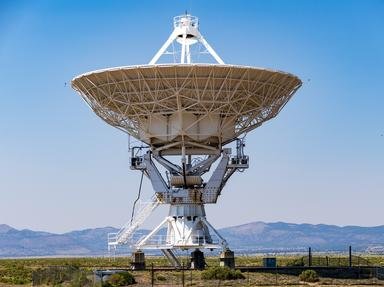Quiz Answer Key and Fun Facts
1. A common problem with refracting telescopes is a fringe of false color around the image, caused by the inability of a large lens to refract all colors of the spectrum to a common focus. This is known as ______.
2. For a body in orbit around the Sun, the point in its orbit which is furthest from the Sun is called __________.
3. The first constellation in the Zodiac is _______; it represents the Ram which gave the Golden Fleece.
4. The brightest star in the constellation Taurus the Bull is the red giant Alpha Tauri, better known as ______.
5. A solar eclipse isn't always total. If the Moon is far enough from the Earth, its umbra fails to completely obscure the Sun, so that a ring of sunlight appears around the Moon. This is a called an ______.
6. The Arecibo telescope in Puerto Rico is the largest of its kind in the world. What kind of telescope is it?
7. The brightness of a star as it is seen from Earth is measured on a logarithmic scale, and known as its _______.
8. Right next to Pegasus is this constellation named after a mythical princess who was rescued by Perseus. Within its boundaries is the nearest spiral galaxy to the Milky Way.
9. Aristarchus of Samos in 280 BCE was one of the earliest philosophers to suggest which model of the solar system?
10. A black hole is always surrounded by an ___________.
Source: Author
Autolycus2
This quiz was reviewed by FunTrivia editor
gtho4 before going online.
Any errors found in FunTrivia content are routinely corrected through our feedback system.


